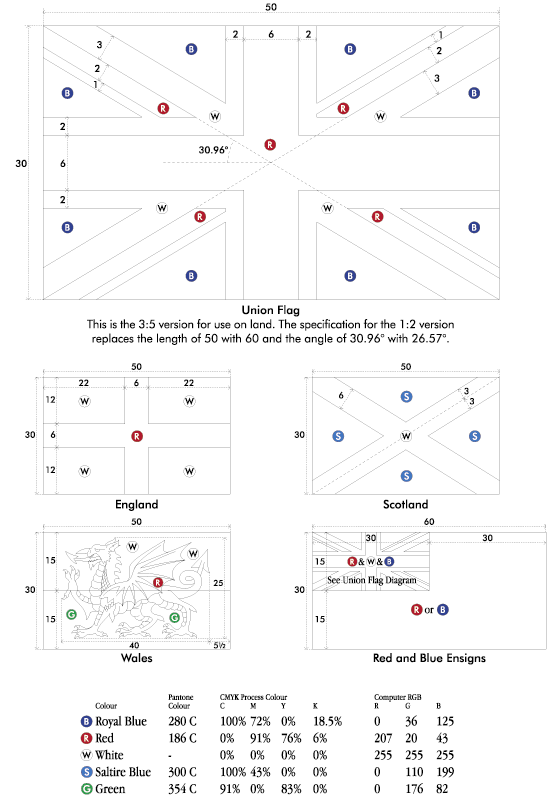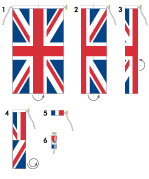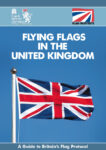 What is correct UK flag protocol?
What is correct UK flag protocol?
What rules apply when flying flags in the UK?
Flying Flags in the United Kingdom (Flag Institute/UK Parliamentary Flags & Heraldry Committee, 2010, revised 2024) is the authoritative guide.
Find a few simple rules to follow when flying the UK’s national flags in different situations:
- UK Parliamentary approval
- includes the Union Flag (or Union Jack) and the flags of England, Scotland and Wales
- practical, easy to use
- clear illustrations and diagrams
- distributed to every UK government department and local authority
- for anyone with a flagpole
Download the 2024 edition for free in PDF format.
Or consult the 2024 edition online by using the links below:
- The Union Flag
- The Flag Protocol of the United Kingdom
- Flying the Flag
- Position of Honour
- In Front of and On a Building
- Within a Circle of Flags
- From a Flagpole with Yardarm and Gaff
- In Processions
- With Crossed Flags
- Suspended Vertically Above a Street
- Flat Against a Surface
- On a Speaker’s Platform
- Double-Flagging
- As a Pall for a Coffin
- On Vehicles
- On Uniforms
- At Civilian Transport Facilities
- Pennants
- The Royal Standard
- Flags at Half-mast
- The Proper Disposal of Flags
- Appendix A – British Flags
- Appendix B – Precedence of Flags
- General Precedence
- Order for Commonwealth Events
- Order for United Nations Events
- English Alphabetical Order
- Appendix C – United Kingdom Flag Specifications
The Union Flag
The national flag of the United Kingdom, the Crown Dependencies and Overseas Territories is the Union Flag, which may also be called the Union Jack.[1] The first Union Flag was created in 1606 and combined the flags of England and Scotland. The present Union Flag dates from 1801 when St Patrick’s Cross was added to represent Ireland. It then became possible to display the flag, incorrectly, upside down. There is no Flag Act in UK law, and the Union Flag is the national flag by long-established custom and practice rather than by statute.
The Flag Protocol of the United Kingdom
The national flags of the United Kingdom (ie. the Union Flag and the flags of England, Scotland and Wales) should be displayed only in a dignified manner befitting the national emblems. They should not be displayed in a position inferior to any other flag or ensign.
It is improper to use the national flags as a table or seat cover or as a masking for boxes, barriers, or the intervening space between a dais or platform and the floor. The use of any of the national flags to cover a statue, monument or plaque for an unveiling ceremony is discouraged.

The First Union Flag
Flying the Flag
Flags may be flown on every day of the year. Government and local authority buildings in England, Scotland and Wales are encouraged to fly national flags every day of the year (the flying of flags at certain locations in Northern Ireland is constrained by The Flags Regulations [Northern Ireland] 2000 and Police Emblems and Flag Regulations [Northern Ireland] 2002).[2]
Flags are normally flown from sunrise to sunset but they may also be flown at night, when they should be illuminated.
No permission is needed to fly the national flags and they are excluded from most planning and advertising regulations (but flagpoles may not be).
National flags should never be flown in a worn or damaged condition, or when soiled. To do so is to show disrespect for the nations they represent.
Important: the Union Flag has a correct way up – in the half of the flag nearest the flagpole, the wider diagonal white stripe must be above the red diagonal stripe, as Scotland’s St Andrew’s Cross takes precedence over Ireland’s St Patrick’s Cross. It is most improper to fly the flag upside down.
If a purely decorative effect is desired it is better to confine the display to flags of lesser status; for example, house flags, pennants or coloured bunting.
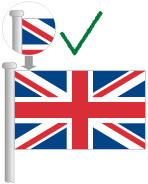
The Modern Union Flag
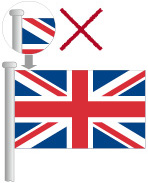
This Flag is Upside Down!
Position of Honour
The order of precedence of flags in the UK is: Royal Standards, the Union Flag, the flag of the host country (England, Scotland, Wales, etc.), flags of other nations (in alphabetical order, see the list below), the Commonwealth Flag, the European Union Flag, county flags, flags of cities or towns, banners of arms, and house flags. See Appendix B for a detailed precedence list and special precedence orders for international organisations.
When British national flags are flown with the flags of other nations each flag should be the same size (or have the same width – the measurement from top to bottom) and should fly from a separate flagpole of the same height.[3] The UK’s flag shape of 3:5 works well with nearly all other nations’ flags and it is recommended to use these proportions if a standard size is required for all the flags in a display.[4]
The senior British national flag (eg. the Union Flag or the flag of England, Scotland or Wales) should be raised first and lowered last, unless all the flags can be raised and lowered simultaneously. Flags should be raised and lowered in a dignified manner. An alternative British tradition for flag raising is to hoist the flag while rolled up and secured with a thin piece of cotton or a slip knot. A sharp tug of the halyard will break the cotton and release the flag to fly free. This is known as ‘breaking’ the flag, and is sometimes used to signal the beginning of an event, or the arrival of a VIP.

In Front of and On a Building
Where there are two or more flagpoles parallel to the building line, the senior national flag should be the first flag on the left of an observer facing the main entrance of the building. The remaining flags then appear in order of precedence from left to right.
Where there are two or more flagpoles on the forecourt of a building angled to the main entrance, the senior national flag should be flown on the outermost pole when the flagpoles are to the left of the main entrance and on the innermost pole when the flagpoles are to the right of the main entrance, as shown in the diagram.
If only one flag is to be flown and there are two flagpoles, it should be flown on the flagpole to the observer’s left. If there are more than two flagpoles, it should be flown as near as possible to the centre. This only applies when the other flagpoles remain empty. It is permissible to fly the same national flag on more than one flagpole by repeating the order of precedence.
If one flagpole is higher than the rest, then the senior national flag can fly from that flagpole; however no non-UK national flags can be flown on the other flagpoles. These can be used for more junior flags such as county and house flags. Alternatively the higher flagpole can be left empty and the remaining flagpoles used. In general when siting flagpoles it is preferable to keep them at the same level to avoid protocol restrictions.
The appropriate size of flag for any flagpole is a matter of aesthetics but, as a guide, a ground-level flagpole should have a flag whose length (its longer dimension) is no more than 1/3 of the pole’s height. A flagpole on top of a building may need a larger flag because of the added height of the building.



Within a Circle of Flags
In a semi-circle of flags representing a number of nations, the senior national flag should be in the centre. The remaining flags should be placed with the next most senior flag (or first in alphabetical order if all the flags are of equal seniority) on the left of the central flag, the next on the right of the central flag, the next on the 2nd left from the central flag, and continuing to alternate left and right.
In an enclosed circle of flags representing a number of nations, the senior national flag should be flown on the flagpole immediately opposite the main entrance to the venue, or above the Royal Box if there is no main entrance. The remaining flags should be arranged as for the semi-circle of flags described above. Alternatively they can be arranged alphabetically, going clockwise.


From a Flagpole with Yardarm and Gaff
When displayed on a flagpole fitted with yardarms (horizontal cross-pieces), the senior national flag or ensign[5] should be flown from the starboard yardarm (the right as viewed from the rear, the left as viewed from the front).
If the flagpole is fitted with a gaff (a short pole attached to the flagpole at an angle – see diagram), the senior ensign should be flown from the gaff. If there is no ensign to be flown, the gaff should be left empty and the senior national flag flown from the starboard yardarm, as described above.
A yacht club burgee or distinguishing flag can be flown from the masthead, the highest point of the flagpole.


In Processions
The senior national flag should always lead in a single file of flags.
When two or more flags are carried side-by-side, the senior national flag takes the position of honour at the right-hand side of the line facing the direction of movement (the left of an observer watching the line approach).
When passing the person taking the salute the flag should be lowered so that the staff is horizontal. This can be done by simply lowering the staff straight ahead, or by lowering the staff towards the person taking the salute and then swinging it round to straight ahead. All the movements should be slow and dignified. After the salute, the flag should be raised again.



Flat Against a Surface
Union Flag – If hung horizontally or vertically, the broad white diagonal should be uppermost in the top-left corner.
Other flags – If hung vertically, the edge that would normally be the top of the flag should be on the left, so, for example, ensigns have their Union Flag canton in the upper left corner. On ensigns that have an armorial badge, if possible the badge should be upright, and the correct way round.

On a Speaker’s Platform
When displayed from a staff, on a speaker’s platform, the senior national flag should be placed on the right-hand side of the speaker, and therefore to the audience’s left.
For interior or parade use a ‘dress flag’ may be used. This is sometimes made of silk or satin with a fringe around three sides. The fringe can be gold or red/white/blue for the Union Flag, red/white for St George’s Cross, blue/white for St Andrew’s Cross and green/white for the Red Dragon. The fringe is purely decorative.


Double-Flagging
Sometimes it may be desired to display two flags when only one flagpole is available. As long as both flags are British this is possible. The senior flag should fly at the top, with a gap of about 30cm (12”), assuming there is enough vertical space on the pole. For example, the Union Flag can be flown over the flag of England, Scotland or Wales (as shown), or over a county, city or house flag. When flags are at half-mast the lower flag must be removed.

As a Pall for a Coffin
If a national flag is to be used on a coffin, it should be placed so that the top-left corner of the flag is over the deceased’s left shoulder. The flag should be removed before interment or cremation and folded.
If the flag is to be retained by the next of kin it can be folded using the Royal Navy’s method shown here, based on a 1:2 flag (138cm x 276cm) with no fittings (ie. ropes, toggles or clips), or using the method shown above:

A Coffin with a Fitted Cover
(if a flag is used, 1:2 proportions fit the shape of the coffin better)
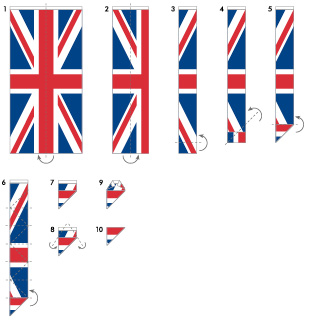
The Union Flag is pulled taut. The Union Flag is folded in half, lengthways (Fig. 1).
Keeping the Union Flag taut it is then folded in half (lengthways) a second time (Fig. 2).
A straight fold of 1/14 of the flag’s length (20cm on a casket cover) is taken from the foot of the Union Flag (Fig. 3). This fold may not be necessary, or may need to be a different length, depending upon the shape, size and material of the flag being folded – practise first!
The first triangular fold is made ensuring it is within 5mm of the straight edge (Fig. 4).
The triangular folding procedure continues until it reaches the head of the Union Flag (Figs. 5, 6 & 7).
Any remainder is tucked away into the fold of the triangular shape (Fig. 8 & 9).
The Union Flag ready for presentation (Fig. 10).
On Vehicles
A car flag should be placed on a staff fitted to the front-right wing, in the centre of front edge of the bonnet, or in the centre of the front edge of the roof. If two flags are to be flown, the senior flag should be on the front-right wing and the junior flag on the front-left wing.
When flags are painted onto a vehicle, or on the tail fin of an aircraft, the flag on the port side should show the obverse of the flag (ie. the flagpole on the left), while that on the starboard side should show the reverse (ie. the flagpole on the right). On surfaces perpendicular to the direction of travel (eg. the back of the vehicle) the obverse of the flag should be shown.

On Uniforms
When flag shoulder patches are worn on uniforms the flag on the left shoulder or sleeve should show the obverse of the flag (ie. the flagpole at the wearer’s front). If there is a patch on the right shoulder or sleeve it should show the reverse of the flag (ie. still with the flagpole at the wearer’s front). If more than one flag is to be worn, the Union Flag should be at the top.

At Civilian Transport Facilities
Civilian marine facilities should fly the Civil Ensign (the undefaced Red Ensign) as their national flag, unless they belong to an organisation that holds a warrant for a special ensign, when that ensign should be used instead.
Civilian air facilities, such as airports and airfields, should fly the Civil Air Ensign as their national flag, rather than the Union Flag. They may additionally fly the flag of England, Scotland or Wales and the appropriate county flag.

The Civil Air Ensign
Pennants
It is sometimes impractical to fly a full-size flag throughout the year – flags can wear out quickly, especially if they are flown in adverse conditions. Bare flagpoles are a sad sight. The pennant, or vimpel, is a solution to these problems. The long narrow streamer-like flags are designed to be left flying day and night. The optional single point attachment and the narrow tail reduce wear and their length means that they can be easily repaired.

Union

England

Scotland

Wales
The Royal Standard
The Royal Standard (actually the Royal Banner – a standard being an heraldic flag similar to the pennants above) should only be flown whilst the Royal person is on the premises, being hoisted (or broken) on their arrival and lowered following their departure. If the Royal person is to be present in a building, the Lord Chamberlain’s Department or the Royal person’s private secretary should be consulted. They will advise on the flag to be flown. The Royal Standard is never hoisted when the Royal person is passing in procession.
The Royal Standard takes precedence over all other flags in the United Kingdom, including the Union Flag.

The Royal Standard
(in Scotland the design is different)
Flags at Half-mast
Half-mast means the flag is flown two-thirds of the way up the flagpole, with at least the height of the flag between the top of the flag and the top of the flagpole. Flags cannot be flown at half-mast on poles that are more than 45° from the vertical, but a mourning cravat can be used instead (see below).
When a flag is to be flown at half-mast, it should first be raised all the way to the top of the mast, allowed to remain there for a second and then be lowered to the half-mast position. When it is being lowered from half-mast, it should again be raised to the top of the mast for a second before being fully lowered.
When a British national flag is at half-mast, other flags on the same stand of poles should also be at half-mast or should not be flown at all. Flags of foreign nations should not be flown, unless their country is also observing mourning.
The Royal Standard never flies at half-mast. It represents the Monarchy, which is continuous, and it would therefore be inappropriate for it to fly at half-mast.
Flags should be flown at half-mast on the following occasions:
- From the announcement of the death until the funeral of the Sovereign, except on Proclamation Day when flags are flown at full-mast following the proclamation.
- From the announcement of the death until the funeral of a member of the Royal Family styled ‘Majesty’ or ‘Royal Highness’, subject to special commands from the Sovereign in each case.
- On the day of the announcement of the death and on the day of the funeral of other members of the Royal Family, subject to special commands from the Sovereign in each case.
- The funerals of foreign Rulers, subject to special commands from the Sovereign in each case.
- The funerals of Prime Ministers and ex-Prime Ministers of the United Kingdom, subject to special commands from the Sovereign in each case.
- The funerals of First Ministers and ex-First Ministers of Scotland, Wales and Northern Ireland, subject to special commands from the Sovereign in each case. Unless otherwise commanded by the Sovereign, this only applies to flags in their respective countries.
- At British Embassies, High Commissions and Missions when flags in the host country are flown at half-mast, subject to the discretion of the Chef de Mission.
- Any other occasions where the Sovereign has given a special command.
If the body of a very distinguished citizen is lying in a building, the flag should fly at half-mast on that building until the body has left.

A Stand of Flags at Full-mast

The Same Stand at Half-mast
An alternative mark of mourning, used when half-masting is unsuitable, is to add a black cravat or ribbon to the top of the flag, at the hoist.
The above cover Royal and National Mourning, but flags may be flown at half-mast on private or non-Government buildings on other relevant occasions. Flags fly at full-mast on Remembrance Sunday.

Mourning Cravats
The Proper Disposal of Flags
When a flag becomes tattered or faded and is no longer in a suitable condition for use, it should be destroyed in a dignified way, for example by burning, tearing or cutting into strips that no longer resemble the original flag.
Footnotes
[1] See Hansard – House of Lords Debate 14 July 1908 vol 192 cc 579 – 80.
[3] International protocol prohibits the flying of any nation’s flag higher than another (apart from at medal ceremonies during sporting events).
[4] If each country’s official dimensions are being used, any of the flags that are square or nearly square can have a slightly larger width (up to 25% more) to give a more equal area.
[5] Ensigns are the national flags that identify a vessel’s nationality and in the UK have the Union Flag in the top corner.
Appendix A – British Flags
A selection of the principal flags of the United Kingdom, British Overseas Territories and Crown Dependencies:
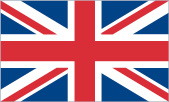
Union Flag
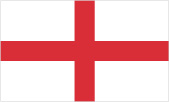
England
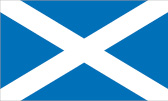
Scotland
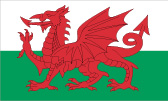
Wales
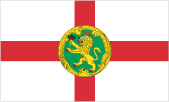
Alderney
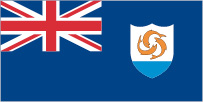
Anguilla
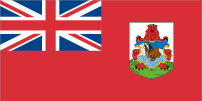
Bermuda
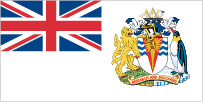
British Antarctic Territory
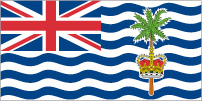
British Indian Ocean Territory
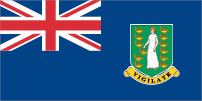
British Virgin Islands
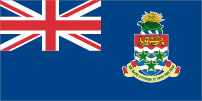
Cayman Islands
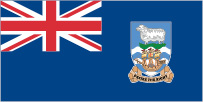
Falkland Islands
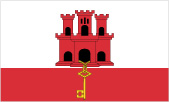
Gibraltar
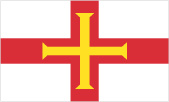
Guernsey
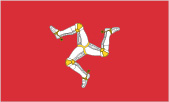
Isle of Man
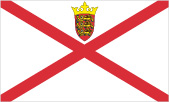
Jersey
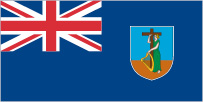
Montserrat
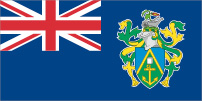
Pitcairn Islands
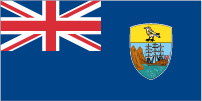
Saint Helena
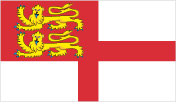
Sark
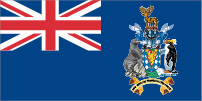
South Georgia and the South Sandwich Islands
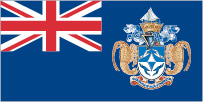
Tristan da Cunha
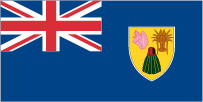
Turks and Caicos Islands
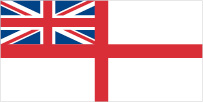
White Ensign (Royal Navy)
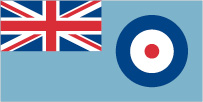
Royal Air Force Ensign
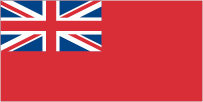
Red Ensign (Merchant Navy)
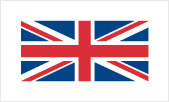
Civil Jack
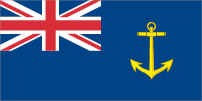
Blue Ensign (Royal Fleet Auxiliary)
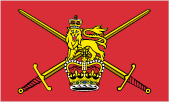
British Army (Non-Ceremonial)
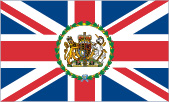
Diplomatic Service Flag (eg. British Embassy)
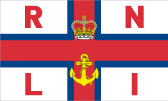
Royal National Lifeboat Institution (RNLI)
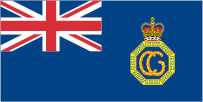
HM Coastguard
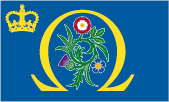
United Kingdom Supreme Court
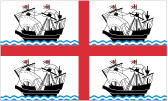
Trinity House (English and Welsh Lighthouses)
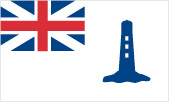
Northern Lights (Scottish Lighthouses)
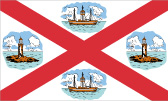
Irish Lights (All Irish Lighthouses)
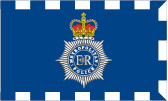
Metropolitan Police
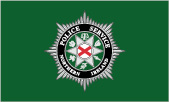
Police Service of Northern Ireland (PSNI)
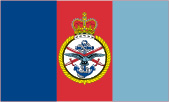
Ministry of Defence
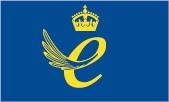
King’s Award for Enterprise
Appendix B – Precedence of Flags
There are four main orders of precedence for flags in the United Kingdom, depending upon the occasion:
General Precedence
The Royal Standards [6]
The Union Flag
The national flag of England, Scotland, Wales, a Crown Dependency or a British Overseas Territory (within those countries, dependencies or territories)
The White Ensign of the Royal Navy [7]
The Ensign of the Royal Air Force [7]
The Blue and Red Ensigns [7]
The Civil Air Ensign [7]
The national flags of England, Scotland, Wales, the Crown Dependencies and the British Overseas Territories (when displayed elsewhere)
The national flags of other nations (in English alphabetical order as shown below)
The United Nations Flag
The Commonwealth Flag
The Council of Europe Flag
The British Army Flag (Non-Ceremonial)
Flags of counties and metropolitan cities
Flags of other cities and towns
Banners of Arms (both personal and corporate)
House flags
Order for Commonwealth Events Held in the UK (but not the Commonwealth Games)
The Royal Standards [6]
The Commonwealth Flag
The Union Flag
The national flag of England, Scotland or Wales (whichever is hosting the event)
The national flags of the Commonwealth in order of original accession to the Commonwealth (date shown in brackets):
Canada (11 Dec 1931, dominion status 1867), Australia (11 Dec 1931, dominion status 1901), New Zealand (11 Dec 1931, dominion status 1907), South Africa (11 Dec 1931, dominion status 1910), India (14/15 Aug 1947), Pakistan (14/15 Aug 1947), Sri Lanka (4 Feb 1948), Ghana (6 Mar 1957), Malaysia (31 Aug 1957), Nigeria (1 Oct 1960), Cyprus (13 Mar 1961), Sierra Leone (27 Apr 1961), Tanzania (9 Dec 1961), Jamaica (6 Aug 1962), Trinidad and Tobago (31 Aug 1962), Uganda (9 Oct 1962), Kenya (12 Dec 1963), Malawi (6 Jul 1964), Malta (21 Sep 1964), Zambia (24 Oct 1964), The Gambia (18 Feb 1965), Singapore (15 Oct 1965), Guyana (26 May 1966), Botswana (30 Sep 1966), Lesotho (4 Oct 1966), Barbados (30 Nov 1966), Mauritius (12 Mar 1968), Eswatini – previously Swaziland (6 Sep 1968), Nauru (1 Nov 1968), Tonga (4 Jun 1970), Samoa (28 Aug 1970), Fiji Islands (10 Oct 1970), Bangladesh (18 Apr 1972), The Bahamas (10 Jul 1973), Grenada (7 Feb 1974), Papua New Guinea (16 Sep 1975), Seychelles (29 Jun 1976), Solomon Islands (7 Jul 1978), Tuvalu (1 Oct 1978), Dominica (3 Nov 1978), Saint Lucia (22 Feb 1979), Kiribati (12 Jul 1979), Saint Vincent and the Grenadines (27 Oct 1979), Vanuatu (30 Jul 1980), Belize (21 Sep 1981), Antigua and Barbuda (1 Nov 1981), Maldives (9 Jul 1982), Saint Christopher and Nevis (19 Sep 1983), Brunei Darussalam (1 Jan 1984), Namibia (21 Mar 1990), Cameroon (13 Nov 1995), Mozambique (13 Nov 1995), Rwanda (29 Nov 2009), Gabon (29 June 2022), Togo (29 June 2022)

The Commonwealth Flag
Order for United Nations Events
The United Nations Flag
The national flags of the United Nations members in order of their name as used at the UN. The exceptions to the normal alphabetical order are (with the sorting letter underlined):
Côte d’Ivoire (Ivory Coast), Democratic People’s Republic of Korea (North Korea), Myanmar (Burma), Republic of Korea (South Korea), Republic of Moldova (Moldova), Timor Leste (East Timor), United Republic of Tanzania (Tanzania)

The United Nations Flag
Possible Contentions
When flying flags of other countries, bear in mind that some countries do not get on well with some other countries, and flying flags of the countries they do not get on with can cause offence to representatives of those countries. A couple of examples: the Taiwan flag may cause offence to representatives of the People’s Republic of China; and the North Cyprus flag may cause offence to representatives of Cyprus and Greece. If you are planning to fly either of these flags it is worth checking who will be attending.
English Alphabetical Order
To help with international flag displays, the nations of the world are listed here in the normal English alphabetical order. The order uses the short name of the country rather than its formal name (ie. ‘Australia’ rather than ‘Commonwealth of Australia’) and ignores ‘The’. Some of the names that might not be familiar are: Congo-Brazzaville – the former French colony of Congo; Congo-Kinshasa – the former Belgian Congo, now formally called the Democratic Republic of Congo; and Côte d’Ivoire – the Ivory Coast.
The countries marked with an asterix (*) are British (the constituent countries of the UK, the Crown Dependencies and the British Overseas Territories); for displays of flags within these countries, dependencies or territories, the local national flag takes precedence immediately after the Union Flag and before any British ensigns (White, RAF, Red, Blue and Civil Air). The remainder should be displayed in alphabetical order as shown, with the countries that make up the United Kingdom taking precedence.
Countries marked with a dagger symbol (†) are dependencies of other nations.
United Kingdom
England*
Scotland*
Wales*
Alderney*
Anguilla*
Bermuda*
British Antarctic Territory*
British Indian Ocean Territory*
British Virgin Islands*
Cayman Islands*
Falkland Islands*
Gibraltar*
Guernsey*
Isle of Man*
Jersey*
Montserrat*
Pitcairn Islands*
Saint Helena*
Sark*
South Georgia and the South Sandwich Islands*
Tristan da Cunha*
Turks and Caicos Islands*
Afghanistan
Albania
Algeria
American Samoa†
Andorra
Angola
Antigua and Barbuda
Argentina
Armenia
Aruba†
Australia
Austria
Azerbaijan
Bahamas, The
Bahrain
Bangladesh
Barbados
Belarus
Belgium
Belize
Benin
Bhután
Bolivia
Bosnia and Herzegovina
Botswana
Brazil
Brunei Darusalam
Bulgaria
Burkina Faso
Burma
Burundi
Cambodia
Cameroon
Canada
Cape Verde
Central African Republic
Chad
Chile
China
Christmas Island†
Colombia
Comoros
Congo-Brazzaville
Congo-Kinshasa (DR)
Cook Islands†
Costa Rica
Côte d’Ivoire
Croatia
Cuba
Curaçao†
Cyprus
Czech Republic
Denmark
Djibouti
Dominica
Dominican Republic
Ecuador
Egypt
El Salvador
Equatorial Guinea
Eritrea
Estonia
Eswatini (Swaziland)
Ethiopia
Faroe Islands†
Fiji
Finland
France
French Polynesia†
Gabon
Gambia, The
Georgia
Germany
Ghana
Greece
Greenland†
Grenada
Guam†
Guatemala
Guinea
Guinea-Bissau
Guyana
Haiti
Honduras
Hong Kong SAR†
Hungary
Iceland
India
Indonesia
Irân
Iraq
Ireland
Israel
Italy
Jamaica
Japan
Jordan
Kazakhstan
Kenya
Kiribati
Kosovo
Kuwait
Kyrgyzstan
Laos
Latvia
Lebanon
Lesotho
Liberia
Libya
Liechtenstein
Lithuania
Luxembourg
Macau SAR†
Madagascar
Malawi
Malaysia
Maldives
Mali
Malta
Marshall Islands
Mauritania
Mauritius
México
Micronesia
Moldova
Monaco
Mongolia
Montenegro
Morocco
Mozambique
Namibia
Nauru
Nepal
Netherlands, The
New Zealand
Nicaragua
Niger
Nigeria
Niue†
Norfolk Island†
North Korea
North Macedonia
Northern Marianas†
Norway
Oman
Pakistan
Palau
Panamá
Papua New Guinea
Paraguay
Perú
Philippines
Poland
Portugal
Puerto Rico†
Qatar
România
Russian Federation
Rwanda
Saint Kitts and Nevis
Saint Lucia
Saint Vincent and the Grenadines
Samoa
San Marino
São Tomé and Príncipe
Saudi Arabia
Senegal
Serbia
Seychelles
Sierra Leone
Singapore
Sint Maarten†
Slovakia
Slovenia
Solomon Islands
Somalia
South Africa
South Korea
South Sudan
Spain
Sri Lanka
Sudan
Suriname
Sweden
Switzerland
Syria
Taiwan
Tajikistan
Tanzania
Thailand
Timor Leste
Togo
Tokelau†
Tonga
Trinidad and Tobago
Tunisia
Türkiye (Turkey)
Turkmenistan
Tuvalu
Uganda
Ukraine
United Arab Emirates
United States of America
Uruguay
Uzbekistan
Vanuatu
Vatican City
Venezuela
Viêt Nam
Virgin Islands†
Yemen
Zambia
Zimbabwe
Footnotes
[6] Only one Royal Standard is normally flown, and the order of precedence is: The Royal Standard of HM The King, The Personal Flags of HM The Queen, HRH The Prince of Wales and Duke of Rothesay, HRH The Duke of Edinburgh, HRH The Princess Royal, HRH The Duke of Gloucester, HRH The Duke of Kent, HRH Prince Michael of Kent, HRH Princess Alexandra, The Other Members’ Standard.
[7] When these ensigns are flown in place of the Union Flag they take the same precedence as the Union Flag.
Appendix C – United Kingdom Flag Specifications
The normal proportions for the national flags of the United Kingdom are 3:5 on land, but ensigns are customarily made in proportion 1:2.
